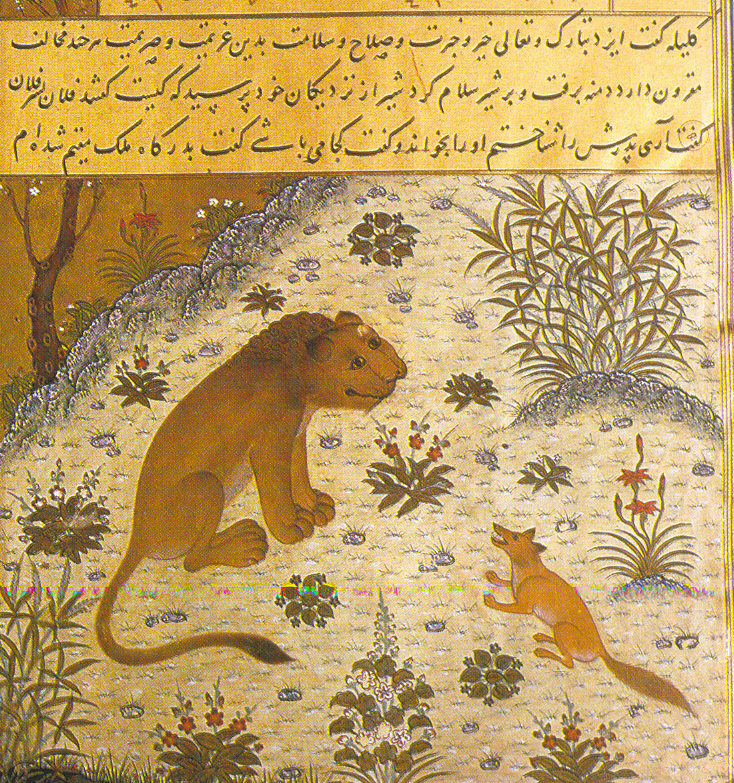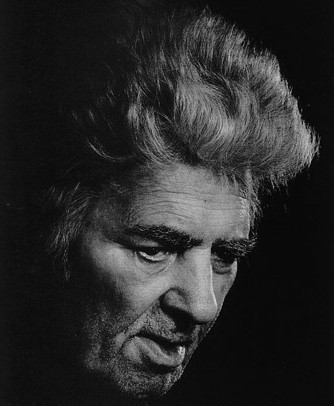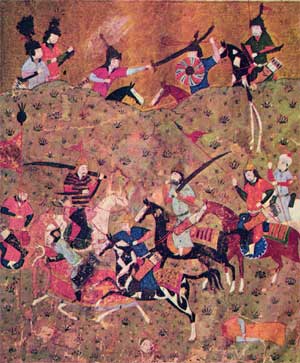|
Asjadi
Abu Nazar ʿAbdul ʿAziz bin Mansur ʿAsjadi () was a 10th-11th century royal Persian poet of the Ghaznavid empire located in the Ghazni province of today's Afghanistan. Originating from Merv, and in some accounts Herat, he was a follower of the panegyric school of poetry of Unsuri in Khorasan, and was a companion of Farrukhi Sistani and Ferdowsi as well. His Divan A divan or diwan (, ''dīvān''; from Sumerian ''dub'', clay tablet) was a high government ministry in various Islamic states, or its chief official (see ''dewan''). Etymology The word, recorded in English since 1586, meaning "Oriental cou ... was already unavailable by the 15th century (if not earlier) and is unknown though around 200 of his verses had been recorded elsewhere. A quatrain attributed to Asjadi was translated by Edward Granville Browne as follows:''I do repent of wine and talk of wine,'' ''Of idols fair with charms like silver fine:'' ''A lip-repentance and a lustful heart—'' ''O God ... [...More Info...] [...Related Items...] OR: [Wikipedia] [Google] [Baidu] |
Unsuri
Abul Qasim Hasan Unsuri Balkhi (; died 1039/1040) was a 10th–11th century Persian poet. ‘Unṣurī is said to have been born in Balkh, today located in Afghanistan, and he eventually became a poet of the royal court of Mahmud of Ghazni Abu al-Qasim Mahmud ibn Sabuktigin (; 2 November 971 – 30 April 1030), usually known as Mahmud of Ghazni or Mahmud Ghaznavi (), was Sultan of the Ghaznavid Empire, ruling from 998 to 1030. During his reign and in medieval sources, he is usuall ..., and was given the title ''Malik-us Shu'ara'' (King of Poets) under Mahmud. His ''Divan'' is said to have contained 30,000 distichs, of which only 2500 remain today. It includes the romance epic '' Vāmiq u ‘Adhrā''. The following dialog between an eagle and a crow, translated by Iraj Bashiri, is an example. In it, Unsuri compares his own status vis-a-vis that of a young poet who has joined the court recently. The Eagle and The Crow: A Dialogue Translated by Iraj Bashiri: :A dialogue occur ... [...More Info...] [...Related Items...] OR: [Wikipedia] [Google] [Baidu] |
Herat
Herāt (; Dari/Pashto: هرات) is an oasis city and the third-largest city in Afghanistan. In 2020, it had an estimated population of 574,276, and serves as the capital of Herat Province, situated south of the Paropamisus Mountains (''Selseleh-ye Safēd Kōh'') in the fertile valley of the Hari River in the western part of the country. An ancient civilization on the Silk Road between West Asia, Central Asia, and South Asia, it serves as a regional hub in the country's west. Herat dates back to Avestan times and was traditionally known for its wine. The city has a number of historic sites, including the Herat Citadel and the Musalla Complex. During the Middle Ages, Herat became one of the important cities of Khorasan, as it was known as the ''Pearl of Khorasan''. After its conquest by Tamerlane, the city became an important center of intellectual and artistic life in the Islamic world. Under the rule of Shah Rukh, the city served as the focal point of the Timurid Re ... [...More Info...] [...Related Items...] OR: [Wikipedia] [Google] [Baidu] |
Ghazni
Ghazni (, ), historically known as Ghaznayn () or Ghazna (), also transliterated as Ghuznee, and anciently known as Alexandria in Opiana (), is a city in southeastern Afghanistan with a population of around 190,000 people. The city is strategically located along Highway 1 (Afghanistan), Highway 1, which follows the path that has served as the main road between Kabul and Kandahar for thousands of years. Situated on a plateau at 2,219 metres (7,280 ft) above sea level, the city is south of Kabul and is the capital of Ghazni Province. The name Ghazni derives from the Persian word ''ganj'', meaning "treasure." Citadel of Ghazni, Ghazni Citadel, the Ghazni Minarets, Minarets of Ghazni, the Palace of Sultan Mas'ud III, and several other cultural heritage sites have brought travelers and archeologists to the city for centuries. During the Pre-Islamic period of Afghanistan, pre-Islamic period, the area was inhabited by various tribes who practiced different religions including Zoro ... [...More Info...] [...Related Items...] OR: [Wikipedia] [Google] [Baidu] |
Persian Literature
Persian literature comprises oral compositions and written texts in the Persian language and is one of the world's oldest literatures. It spans over two-and-a-half millennia. Its sources have been within Greater Iran including present-day Iran, Iraq, Afghanistan, Pakistan, the Caucasus, and Turkey, regions of Central Asia (such as Tajikistan), South Asia and the Balkans where the Persian language has historically been either the native or official language. For example, Rumi, one of the best-loved Persian poets, born in Balkh (in modern-day Afghanistan) or Wakhsh (in modern-day Tajikistan), wrote in Persian and lived in Konya (in modern-day Turkey), at that time the capital of the Seljuks in Anatolia. The Ghaznavids conquered large territories in Central and South Asia and adopted Persian as their court language. There is thus Persian literature from Iran, Mesopotamia, Azerbaijan, the wider Caucasus, Turkey, Pakistan, Bangladesh, India, Tajikistan and other parts of Cent ... [...More Info...] [...Related Items...] OR: [Wikipedia] [Google] [Baidu] |
Farrukhi Sistani
Abu'l-Hasan Ali ibn Julugh Farrukhi Sistani (), better known as Farrukhi Sistani (; – 1040) was one of the most prominent Persian court poets in the history of Persian literature. Initially serving a ''dehqan'' in Sistan and the Muhtajids in Chaghaniyan, Farrukhi entered the service of the Ghaznavids in 1017, where he became the panegyrist of its rulers, Mahmud () and Mas'ud I (), as well as numerous viziers and princes. Background Farrukhi was born in in Sistan, a region extending across the border between eastern Iran and what is now southern Afghanistan. At that time Sistan was under Saffarid rule. Farrukhi's father Julugh was a high-ranking military slave (''ghulam'') of the Saffarid king Khalaf ibn Ahmad (). The origins of Julugh are unclear. Regardless, Farrukhi grew up in a Muslim Persian-speaking environment, and was essentially a Persian. In 1003, the Saffarid dynasty was abolished by the Ghaznavid monarch Mahmud (), who made Sistan a Ghaznavid province. Li ... [...More Info...] [...Related Items...] OR: [Wikipedia] [Google] [Baidu] |
List Of Persian Poets And Authors
The list is not comprehensive, but is continuously being expanded and includes Persian poets as well as poets who write in Persian from Iran, Azerbaijan, Iraq, Georgia, Dagestan, Turkey, Syria, Afghanistan, Turkmenistan, Tajikistan, Uzbekistan, Lebanon, China, Pakistan, India and elsewhere. From the 7th to the 8th centuries * Bassam Kurd, poet (بسام کُرد) * Abu'l-Abbas Marwazi, poet (ابوالعباس مروزی) 9th century 10th century * Ferdowsi فردوسی * Abusaeid Abolkheir ابوسعید ابوالخیر * Rudaki رودکی * Abu Mansur Daqiqi ابومنصور دقیقی * Mansur Al-Hallaj منصور حلاج * Unsuri عنصری * Rabi'a Balkhi رابعه بلخی * Asjadi عَسجَدی * Farrukhi Sistani فرخی سیستانی * Isma'il Muntasir اسماعیل منتصیر * Kisai Marvazi کسائی مروزی * Abu Shakur Balkhi ابوشکور بلخی * Abu Tahir Khosrovani (ابوطاهر خسروانی) * Qabus, Qabus ibn Wushmagir, poet ... [...More Info...] [...Related Items...] OR: [Wikipedia] [Google] [Baidu] |
The Poets Firdawsi, 'Unsuri, And 'Asjadi - Walters W6032B - Full Page
''The'' is a grammatical article in English, denoting nouns that are already or about to be mentioned, under discussion, implied or otherwise presumed familiar to listeners, readers, or speakers. It is the definite article in English. ''The'' is the most frequently used word in the English language; studies and analyses of texts have found it to account for seven percent of all printed English-language words. It is derived from gendered articles in Old English which combined in Middle English and now has a single form used with nouns of any gender. The word can be used with both singular and plural nouns, and with a noun that starts with any letter. This is different from many other languages, which have different forms of the definite article for different genders or numbers. Pronunciation In most dialects, "the" is pronounced as (with the voiced dental fricative followed by a schwa) when followed by a consonant sound, and as (homophone of the archaic pronoun ''thee' ... [...More Info...] [...Related Items...] OR: [Wikipedia] [Google] [Baidu] |
Edward Granville Browne
Edward Granville Browne FBA (7 February 1862 – 5 January 1926) was a British Iranologist. He published numerous articles and books, mainly in the areas of history and literature. Life Browne was born in Stouts Hill, Uley, Gloucestershire, England, the son of civil engineer Sir Benjamin Chapman Browne and his wife, Annie. He was educated at Trinity College, Glenalmond, Burnside's School in Berkshire, Eton College, and the Newcastle College of Physical Science. He then read natural sciences at Pembroke College, Cambridge. He also studied Arabic with Edward Henry Palmer and William Wright, Persian with Edward Byles Cowell, and Turkish with Sir James Redhouse, motivated by an interest in the Turkish people. After graduating in 1882 he travelled to Constantinople. Browne then spent a further two years at University of Cambridge studying the languages of India (defined then as Hindustani, Sanskrit, Persian, and Arabic) and also gained an M.B. in London. In 1887 he was ... [...More Info...] [...Related Items...] OR: [Wikipedia] [Google] [Baidu] |
1040 Deaths
Year 1040 ( MXL) was a leap year starting on Tuesday of the Julian calendar. Events By place Europe * Spring – Nikephoros Dokeianos, Byzantine governor of the Catepanate of Italy, is murdered by Lombard rebels at Ascoli. He is replaced by Michael Dokeianos, who arrives in November with a Varangian army. * August 22– 23 – Battle at Brůdek: Duke Bretislav I of Bohemia defeats the German forces under King Henry III ("the Black") in the Bohemian Forest. * Peter Delyan leads a rebellion against the Byzantine Empire and is proclaimed by the Bulgarian nobles as emperor (''tsar'') Peter II in Belgrade. * The Emirate of Sicily is divided and fragmented into small fiefdoms. The Arab nobles of Palermo restore the regime of the Kalbids (approximate date). Britain * March 17 – King Harold Harefoot dies at Oxford at the age of 24. His illegitimate son Ælfwine Haroldsson is left in the care of his grandmother, Ælfgifu of Northampton. * June 17 – Harthacnut lands ... [...More Info...] [...Related Items...] OR: [Wikipedia] [Google] [Baidu] |
10th-century Births
1 (one, unit, unity) is a number, numeral, and glyph. It is the first and smallest positive integer of the infinite sequence of natural numbers. This fundamental property has led to its unique uses in other fields, ranging from science to sports, where it commonly denotes the first, leading, or top thing in a group. 1 is the unit of counting or measurement, a determiner for singular nouns, and a gender-neutral pronoun. Historically, the representation of 1 evolved from ancient Sumerian and Babylonian symbols to the modern Arabic numeral. In mathematics, 1 is the multiplicative identity, meaning that any number multiplied by 1 equals the same number. 1 is by convention not considered a prime number. In digital technology, 1 represents the "on" state in binary code, the foundation of computing. Philosophically, 1 symbolizes the ultimate reality or source of existence in various traditions. In mathematics The number 1 is the first natural number after 0. Each natural numbe ... [...More Info...] [...Related Items...] OR: [Wikipedia] [Google] [Baidu] |
11th-century Persian-language Poets
The 11th century is the period from 1001 (represented by the Roman numerals MI) through 1100 (MC) in accordance with the Julian calendar, and the 1st century of the 2nd millennium. In the history of Europe, this period is considered the early part of the High Middle Ages. There was, after a brief ascendancy, a sudden decline of Byzantine Empire, Byzantine power and a rise of Normans, Norman domination over much of Europe, along with the prominent role in Europe of notably influential popes. Christendom experienced a formal schism in this century which had been developing over previous centuries between the Latin West and Byzantine East, causing a split in its two largest denominations to this day: Roman Catholicism and Eastern Orthodoxy. In Song dynasty China and the Islamic Golden Age, classical Islamic world, this century marked the high point for both classical History of science and technology in China, Chinese civilization, science and Technology of the Song dynasty, techn ... [...More Info...] [...Related Items...] OR: [Wikipedia] [Google] [Baidu] |
10th-century Persian-language Poets
1 (one, unit, unity) is a number, numeral, and glyph. It is the first and smallest positive integer of the infinite sequence of natural numbers. This fundamental property has led to its unique uses in other fields, ranging from science to sports, where it commonly denotes the first, leading, or top thing in a group. 1 is the unit of counting or measurement, a determiner for singular nouns, and a gender-neutral pronoun. Historically, the representation of 1 evolved from ancient Sumerian and Babylonian symbols to the modern Arabic numeral. In mathematics, 1 is the multiplicative identity, meaning that any number multiplied by 1 equals the same number. 1 is by convention not considered a prime number. In digital technology, 1 represents the "on" state in binary code, the foundation of computing. Philosophically, 1 symbolizes the ultimate reality or source of existence in various traditions. In mathematics The number 1 is the first natural number after 0. Each natural numbe ... [...More Info...] [...Related Items...] OR: [Wikipedia] [Google] [Baidu] |






